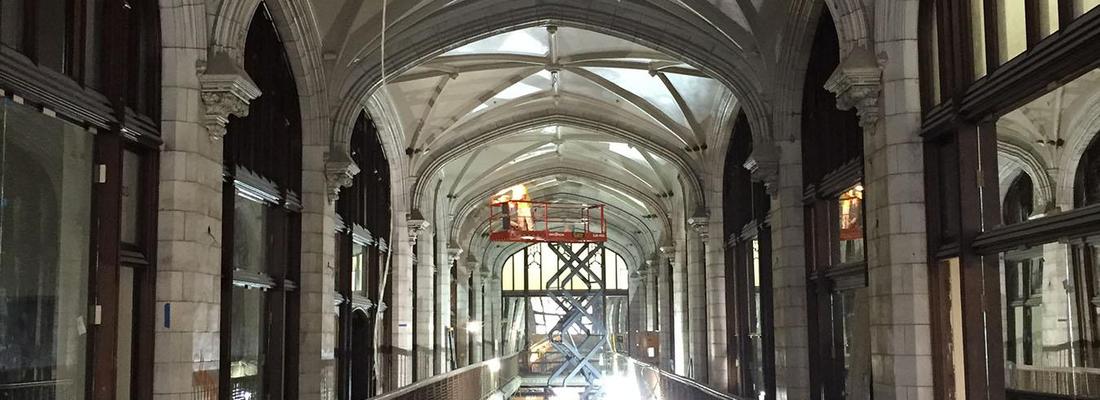
From new construction of senior housing developments, to historic rehabs, to renovating multifamily communities, Dominium completes a lot of construction projects and works with many contractors and construction personnel across the country. Throughout the years, we have developed processes and guidelines for managing the construction process and ensuring each project adheres to the Dominium standards.
New innovations aren’t always best. To get the best results, we cover the fundamentals to ensure we get the best results and each property is built correctly and to our standards.
Plan review page flips with architects. Right before the plans go out to bid we sit down with the architect and review documents together. This includes our construction supervisor, our architectural quality control person, the development associate, the architect and their consultants as necessary. This enables us to answer contractor questions in advance and finely tune the scope of work. The Architect then makes the final corrections and issues the documents for bid.
Plan review page flips with contractors. Once the project is awarded and the contractor is about to begin the project, we sit down once again and walk through the documents with the general contractor’s PM and superintendent. This ensures we point out critical details and products and ensure they understand the project scope.
Use of specialty consultants. We utilize a building envelope consultant who works with the architect to make sure our building is designed with the best weather tight details. We also require onsite preinstall meetings for the envelope materials to make sure the installers follow our procedures.
Technology to get the work done. Our construction supervisors all travel a lot and have tablets to stay up to speed. Our staff and some of our regular GC’s use the Plan Grid app to have access to the plans and specifications and keep us all constantly updated on different projects. We also require Submittal Exchange to be used, which houses all the submittals, RFI’s, ASI’s test reports, change order requests and keeps us informed of approvals for the project. We are also beginning to use drones for building inspections as it is more efficient.
Standard products. We build projects for long-term ownership. The products we use are carefully considered for durability and long-term use and are consistent across projects. Contractors always wonder why we are so specific on things like a towel bar. Two items come to mind. It makes our life easier to inspect knowing the towel bar we install in Orlando, Fla., is the same in Iowa City, Iowa and Greeley, Colo. When it is wrong, it jumps right out at you. The second is we want it to last 20 years or more. In our tax credit rehab projects, a six year old can do chin-ups on the towel bar all day long and it is not going to fail.
Bid reviews. The scope of work on our tax credit rehab projects can be really confusing. As such we request very detailed pricing breakdowns from our contractors. A few days after the bid we will have a call with the GC and architect to review the bid line item by line item. We want to create long-term partnerships with our contractors and we look at the pricing and quantities to make sure they are all in line. By going into this detail, we can tell if they are off in their count of say new medicine cabinets or their pricing does not reflect our standard products. Once the review is done the contractor usually has a couple of days to make corrections and check their work to submit a final price. We don’t want a low bid based on errors. We want an accurate bid based on the GC finding the right subcontractor at the right price.

